The car that symbolizes Toyota's history of delivering safety and security to people for over 70 years
The Land Cruiser was launched in August 1951 as the four-wheel-drive Toyota BJ equipped with a powerful engine, which demonstrated a high level of off-road performance in adverse environments, for example, becoming the first vehicle to climb up to the sixth checkpoint of Mount Fuji. Due in part to its performance record, it began to be adopted as a police patrol car all over Japan.
Thus began the tradition of, "Striving to deliver safety and security to all customers as well as others involved with this vehicle." This tradition would continue for 70 years and can be considered the foundation of a mobility company.
Since then, a cumulative total of approximately 10.4 million units and more than 300,000 units* a year have been enjoyed by customers in 170 countries and regions all over the world. The essence that the Land Cruiser has been maintaining for the sake of customers consists of reliability, durability, and off-road performance.
As an indispensable tool that supports people's livelihood in places that can only be travelled to and from using the Land Cruiser
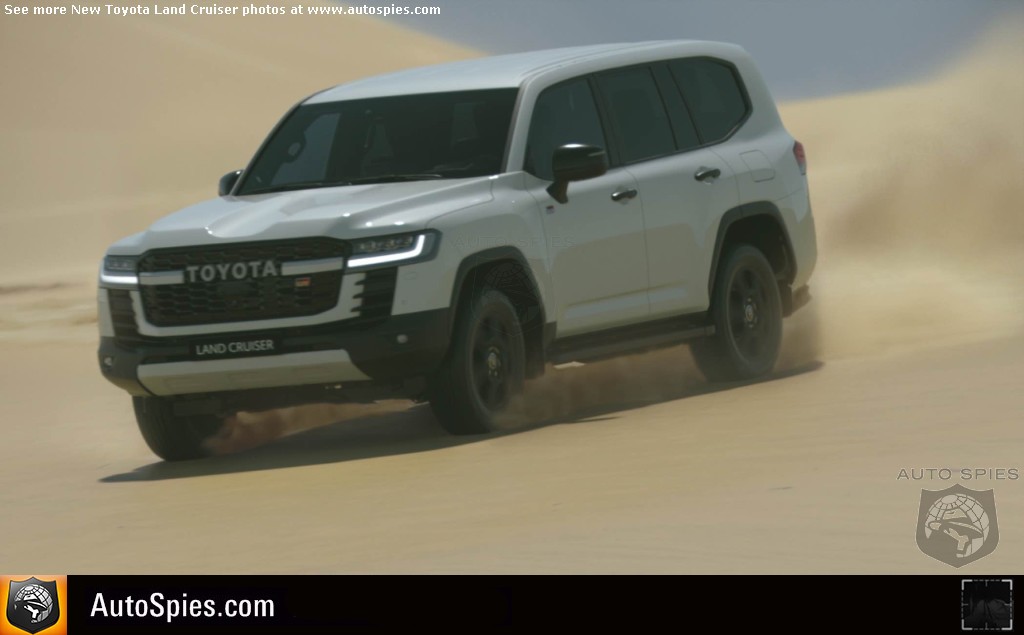
As a vehicle that supports lives in humanitarian aid and disaster relief efforts
As a vehicle that supports more enriched lives through experiences only the Land Cruiser can provide
Evolving as a car while incorporating the latest technologies as the flagship model of the Land Cruiser series
The redesigned new Land Cruiser (300 Series), the successor to the 200 Series that debuted in 2007, is a station wagon model. As the flagship model of the Land Cruiser series, it has in every generation led the way in vehicle evolution while incorporating the latest technologies.
The development objectives for the new Land Cruiser were as follows
Inheriting and evolving the Land Cruiser's essence of "reliability, durability, and off-road performance"
Creating a riding experience that enables the driver to drive with ease on any type of road in the world without tiring easily
With these objectives in mind, Toyota adopted the new GA-F platform based on TNGA while keeping the frame structure, which is the foundation that protects the Land Cruiser's essence. Furthermore, Toyota redesigned the Land Cruiser's character by merging technologies accumulated over many years with the latest technologies, to achieve such improvements as vehicle weight reduction, lowering the center of gravity, the adoption of a new powertrain, and new interior and exterior designs.
Redesign of the Land Cruiser's features with adoption of the new GA-F platform
The frame itself was redesigned to reduce weight and increase rigidity. Various steps were taken, such as the reduction of the total weight of the vehicle (by 200 kg) including the frame and the body, lowered center of gravity, weight distribution, and improved suspension structure. Based on these improvements in features, as well as through improvements obtained through actual driving tests by evaluation members, including in-house drivers with advanced or master-level technical skills and drivers who had participated in the Dakar Rally, Toyota aimed to create a car that is easy to drive and does not easily tire the driver both on-road and off-road.
To further improve the traditional off-road performance, the following developments and new technologies have been adopted
Improvement in the basic suspension performance (wheel articulation: a number indicating the ability of a tire to stay on the ground)
Improved road-holding performance through the adoption of the E-KDSS (Electronic Kinetic Dynamic Suspension System) (first in the world)
Adoption of the Multi-Terrain Monitor, which instantly displays obstacles as viewed from the driver's viewpoint
Adoption of the Multi Terrain Select, which automatically judges the road surface and selects the best driving mode
Simultaneous achievement of class-leading driving performance, pleasant driving experience, and environmental performance based on a new powertrain
A newly developed V6 twin-turbo engine (3.5-liter gasoline and 3.3-liter diesel) is used to achieve class-leading driving performance and drivability that surpass those of a conventional V8 engine. In terms of environmental performance, Toyota is aiming to globally reduce CO2 emissions by approximately 10%* a year compared with the previous model by combining the newly developed Direct Shift-10AT (10-speed automatic transmission) with lighter body weight.
Full New Toyota Land Cruiser Photo Gallery
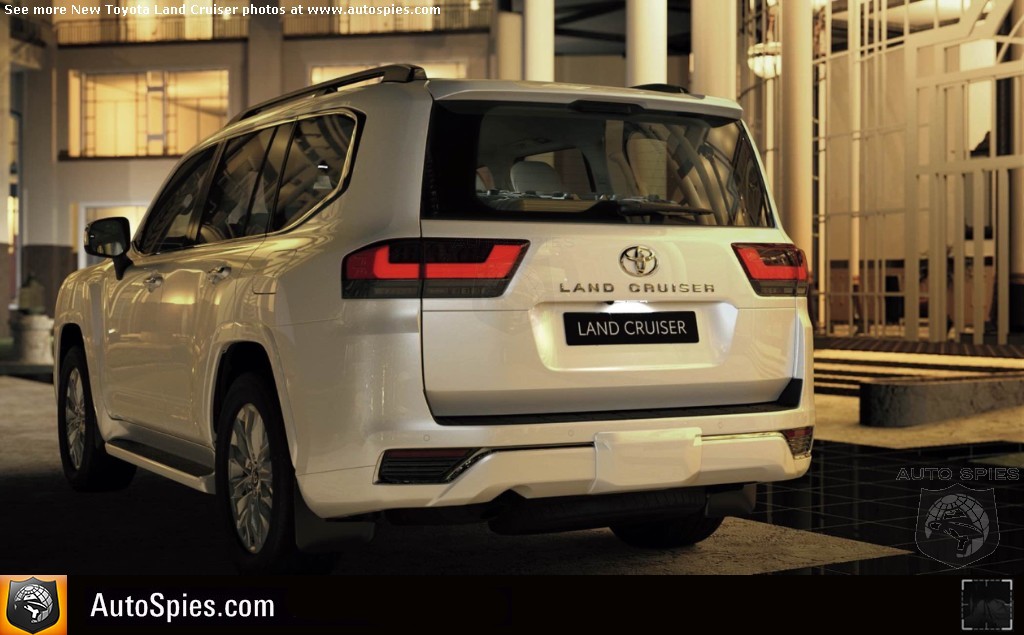

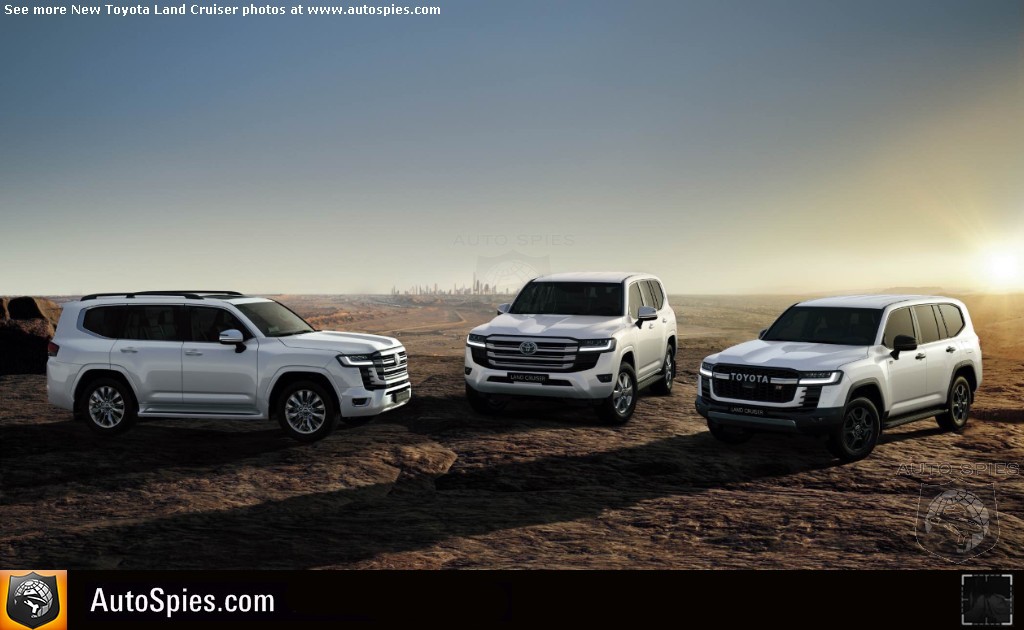
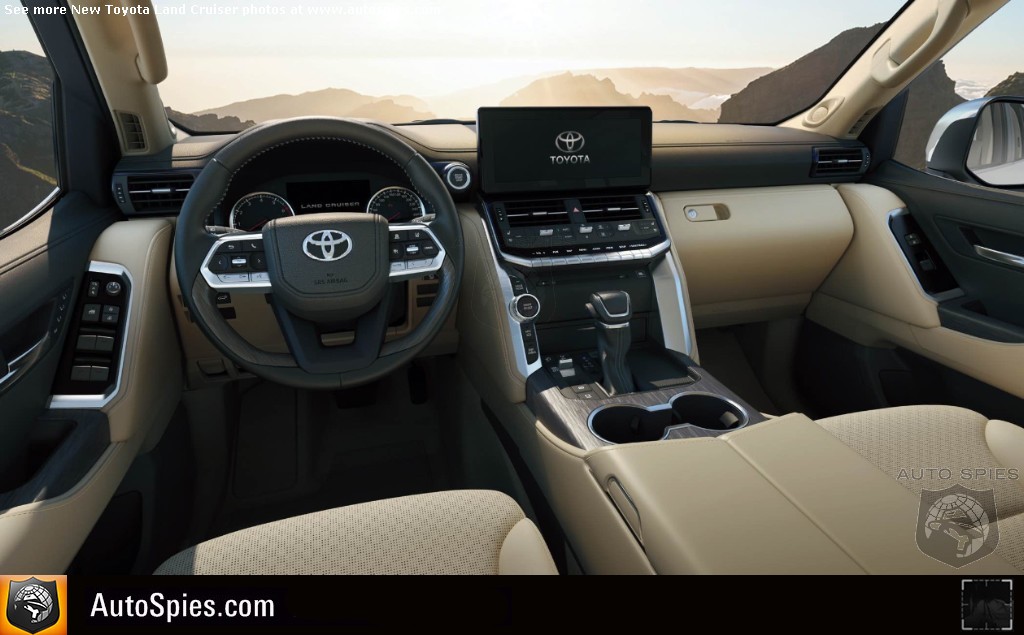
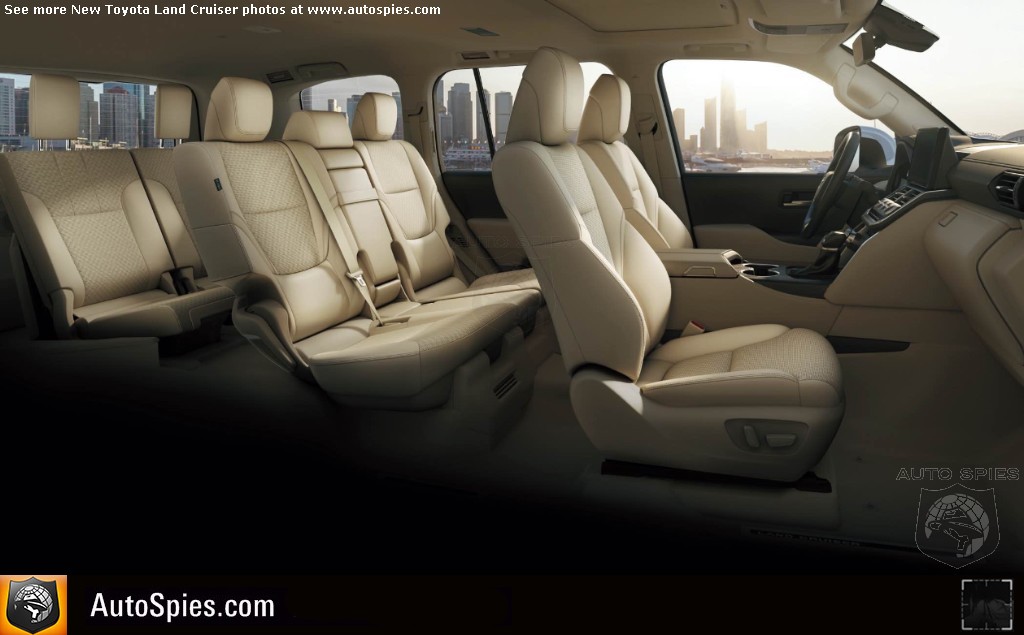

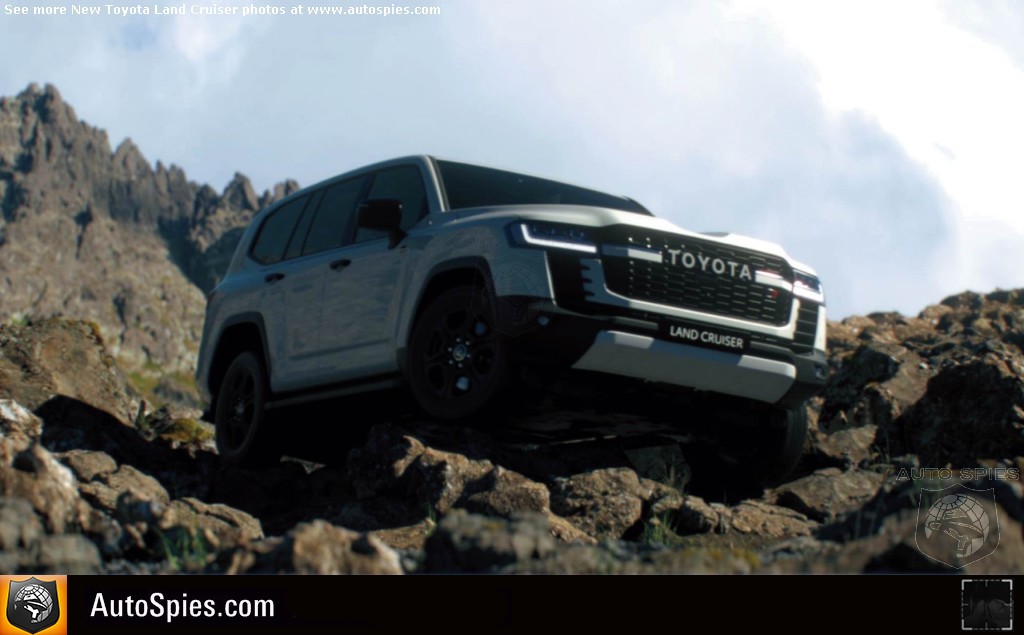
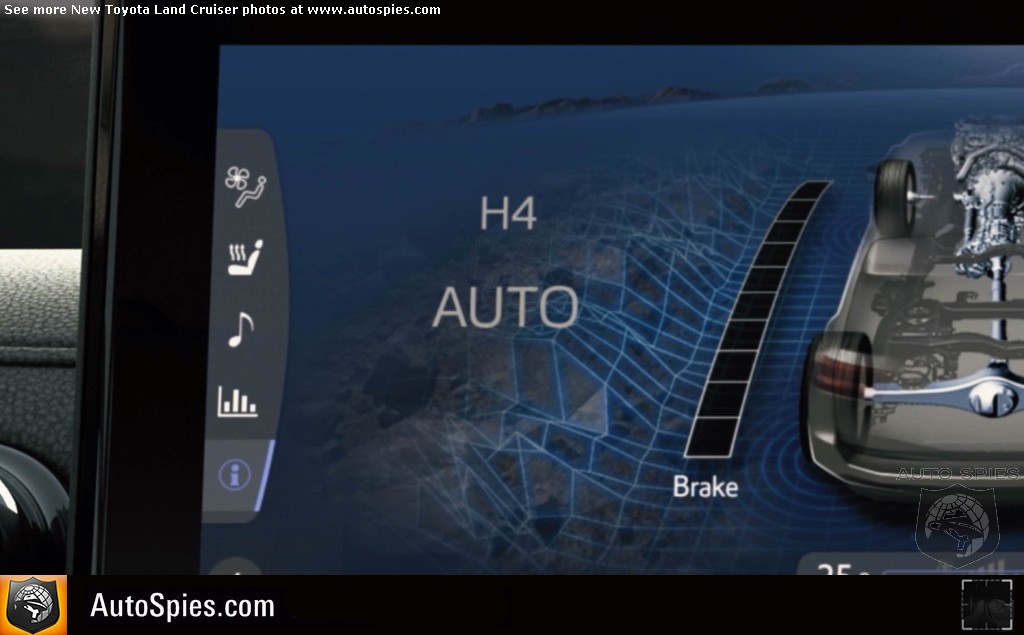

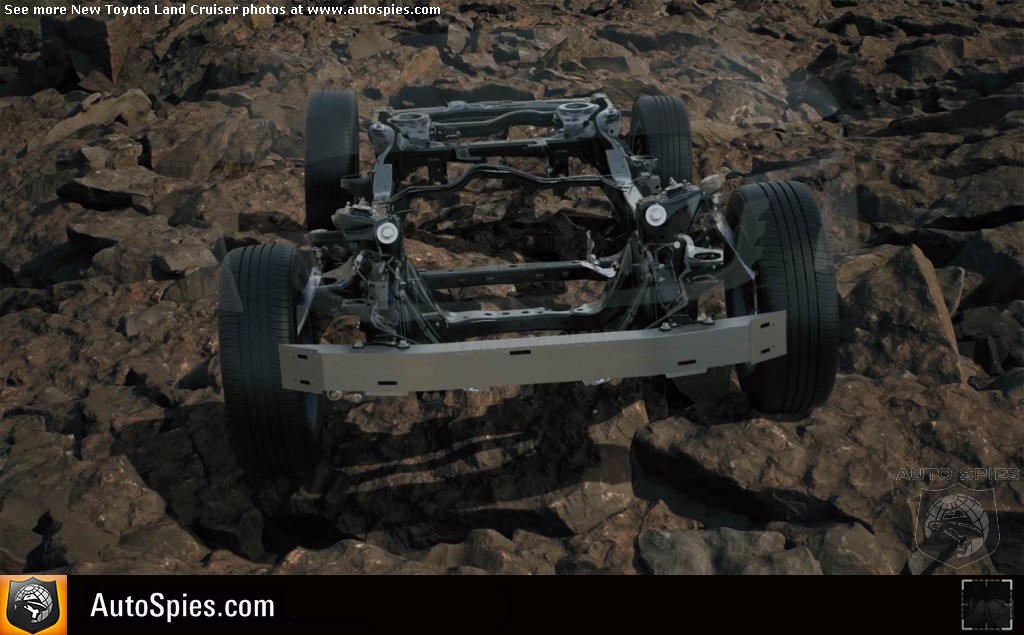
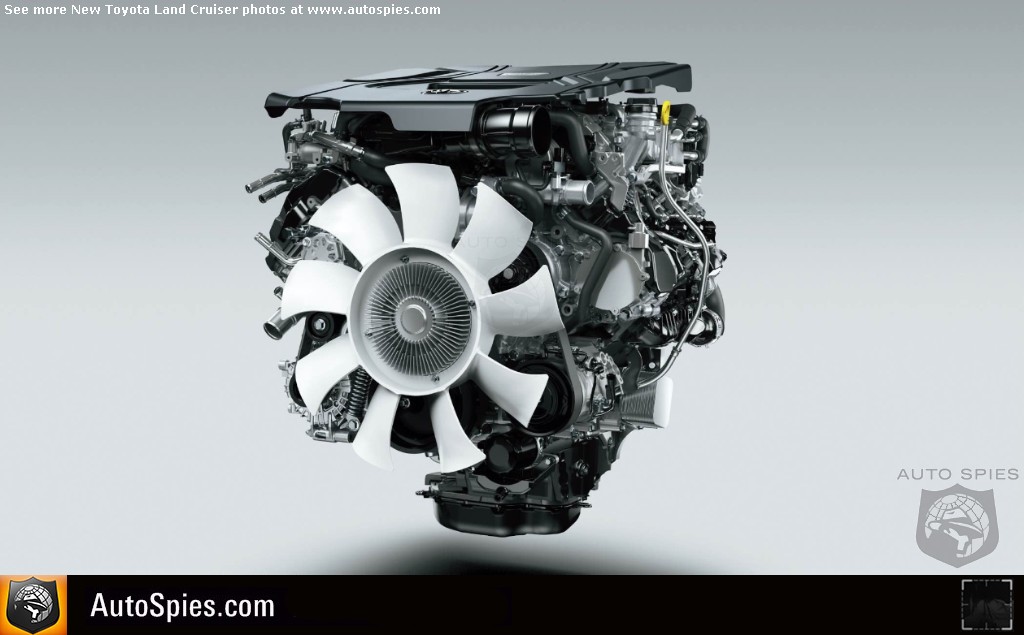



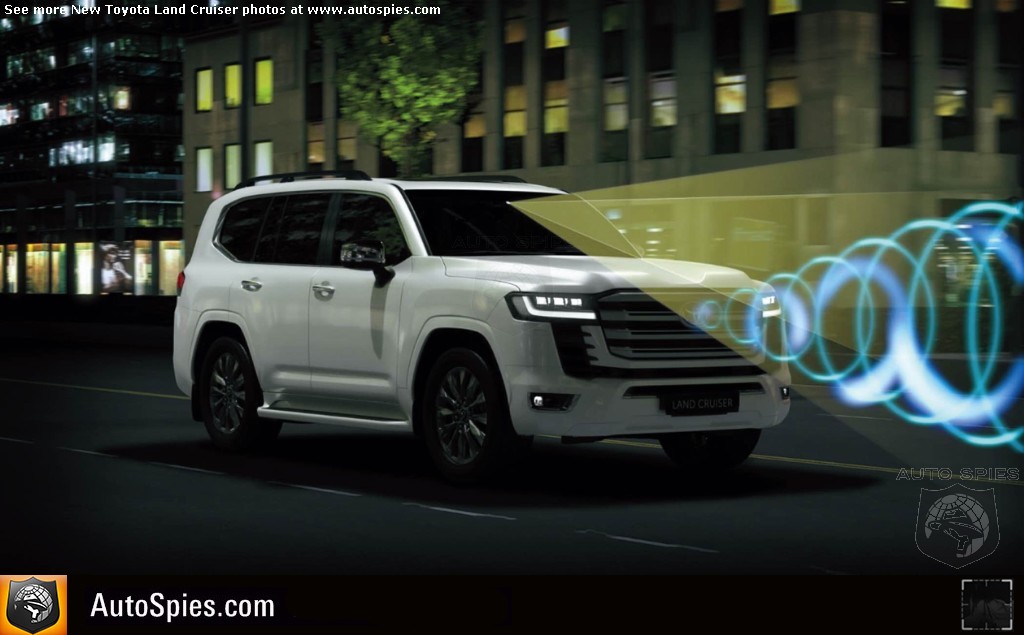
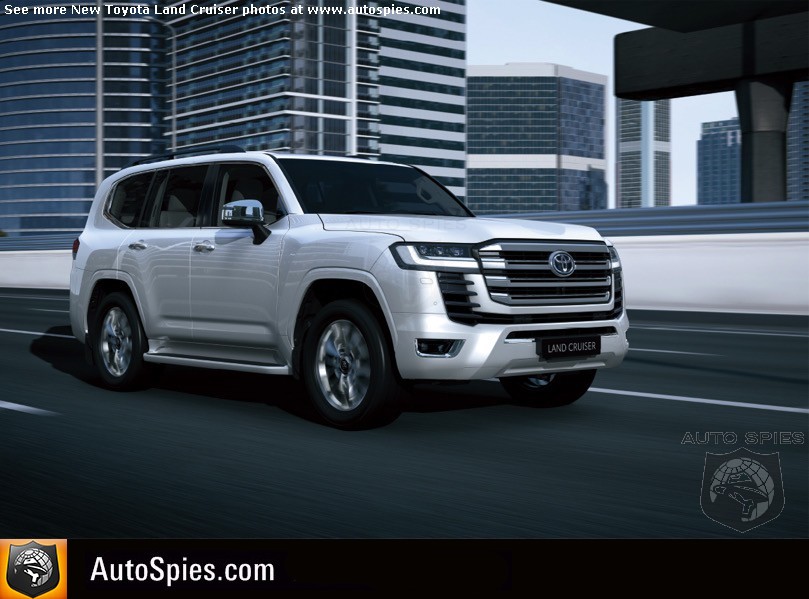


Interior and exterior design in pursuit of the ultimate in functional beauty and a package that places priority on off-road performance
On the exterior, the new Land Cruiser has pursued functional beauty in line with the Land Cruiser's heritage, such as light positions and bumper shape that are unlikely to be damaged during off-road driving. On the interior, a horizontal instrument panel is provided that easily captures the vehicle's position even during off-road driving. Additionally, Toyota pursued operational comfort by positioning switches that can be intuitively operated according to function, and using shape and color designs that improve operability.
As for the package, placing priority on off-road performance, the vehicle size including the total length, total width, and wheelbase, as well as both the departure and approach angles have been kept the same as the previous model (excluding some grades).
Class-leading advanced safety performance befitting the flagship model of the Land Cruiser series
The new Land Cruiser has adopted the latest Toyota Safety Sense active safety package with additional advanced functions. Two functions have been added to the pre-collision system that helps avoid a collision or reduce damage by detecting pedestrians (daytime and nighttime) and cyclists (daytime). The first is a function that detects oncoming vehicles at intersections and oncoming pedestrians crossing the street when the vehicle is turning in either direction. The second is an emergency steering and crash avoidance function, which assists with steering and lane keeping and is triggered when the driver performs a steering maneuver to avoid collision. Furthermore, the new Land Cruiser has adopted the new Parking Support Brake, which helps prevent accidents by recognizing obstacles in front and back of the vehicle in a parking lot, approaching vehicles when the vehicle is backing, and pedestrians.
Having achieved all these evolutions, Toyota plans to launch the new Land Cruiser all over the world starting this summer.